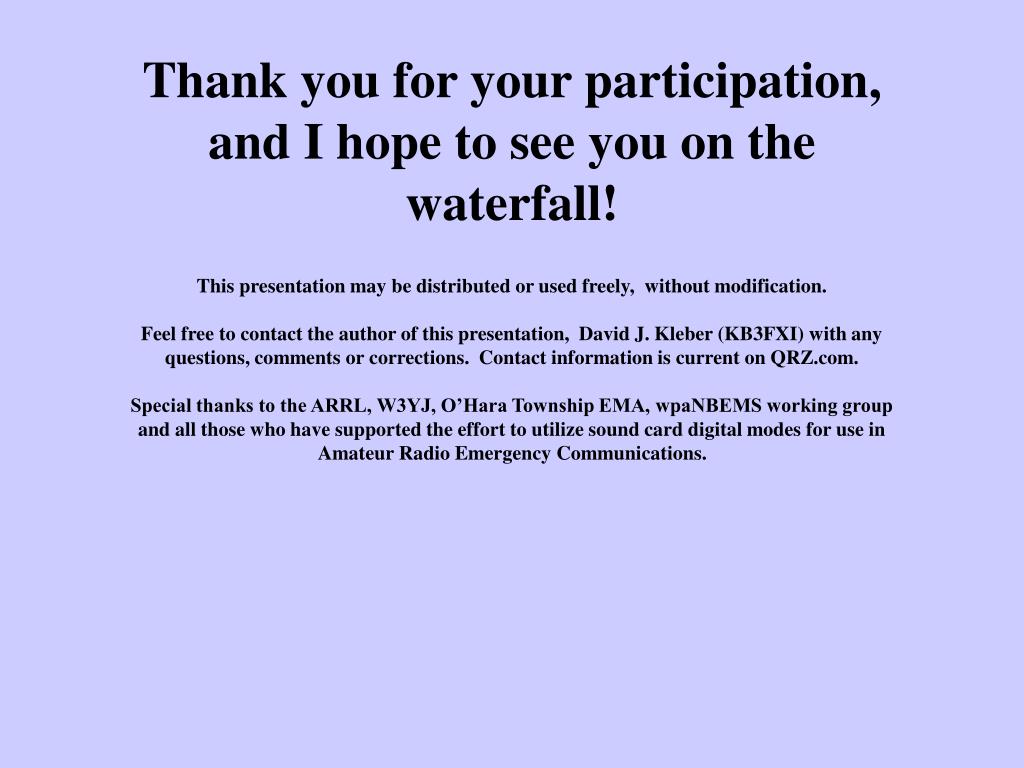
With the Digital Mode Application panel set to WinWarbler on the Configuration window's Bandspread tab and WinWarbler running, clicking the callsign of a station in the Bandspread window that is operating in PSK31, PSK63, PSK125, or RTTY will convey the entry's callsign, frequency, mode, and grid square to WinWarbler, which will populate its QSO Info panel with this information and direct Commander to QSY your transceiver to the appropriate frequency and mode. double-clicking an active DX station will perform all of the operations described above under single-clicking, and then reduce the slide rule dial range by one step, unless the range is already 1 kHz.

clicking an active DX station will QSY your transceiver to the station's frequency, mode, and QSX frequency.Alternatively, zooming in to a smaller dial range may separate the report, or a smaller font size can be specified. For busy frequencies and a long lifetime, it may be necessary to expand the Bandspread window horizontally to see all of the reports if the entire list of callsigns operating close together in frequency is not visible, the last character displayed will be a +, as illustrated in the left-most screen-shot above. Using this mechanism, you can QSY to the most recent 5 frequencies.Īctive DX stations that are close together in frequency are separated horizontally to form a list of up to 8 reports. Clicking a band button sets the radio's frequency to the most recent frequency used on that band, and sets its mode to the mode in use at that time the Band Stack is then advanced, so that clicking the same band button a second time sets the frequency/mode to the next-most-recent frequency/mode used on that band. The Bandspread window's Band panel contains a button for each band between 160m and. If you QSY the radio, and then let it remain on a frequency for longer than the dwell time setting, the new frequency and mode will be saved on the appropriate Band Stack. Commander remembers the last 5 frequencies you visited on each band, and the mode in use for each such visit this information is stored in a Band Stack associated with each band. Commander displays each active DX station on the Bandspread window's slide rule dial unless its age exceeds the specified lifetime:Īs depicted above, you can adjust the width of the Bandspread window to include a Band panel. If SpotCollector is running and Commander's Bandspread window is open, then SpotCollector will automatically send Commander reports of active DX stations operating on the transceiver's current band that meet SpotCollector's current filter criteria. You can also QSY via the PageUp andd PageDown keys.

Allowing the mouse cursor to hover over the dial will produce a small popup showing the associated frequency to which your radio would be QSY'd if you were to click or double-click. Double-clicking the dial will QSY your radio to the associated frequency and then reduce the range by one step, unless the range is already 1 kHz. You can vary this range from 1 kHz to 100 kHz in six steps your radio's current frequency will always appear centered in the dial.Ĭlicking on the dial will QSY your radio to the associated frequency. The Range panel determines the range of frequencies depicted on the slide rule dial.


You can resize the Bandspread window both vertically and horizontally. Using the Bandspread Window to Change Frequency and Display Active DX StationsĬlicking the Main window's Bandspread button displays Commander's Bandspread window, which provides a vertical slide rule dial showing range of frequencies around your radio's current frequency, and a Band panel containing an array of buttons corresponding to the 160m through 2m amateur bands.


 0 kommentar(er)
0 kommentar(er)
